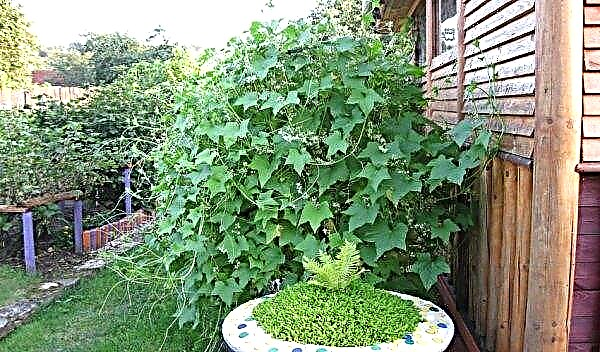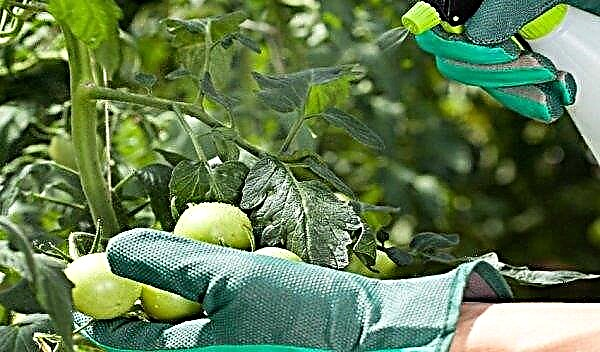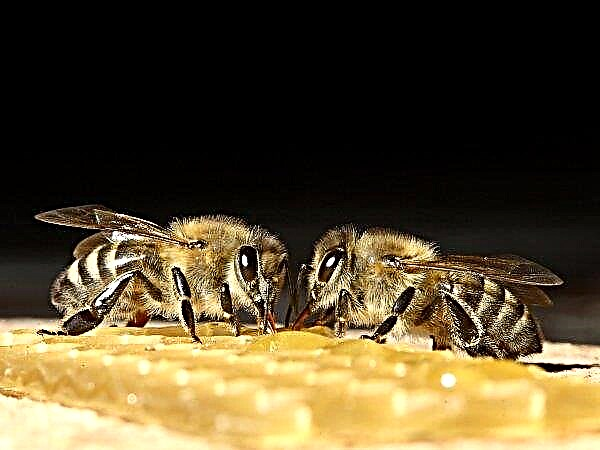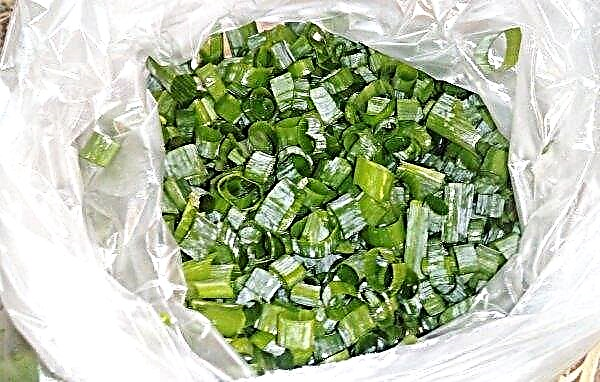In almost every interior of offices, government offices, large halls, you can see a large evergreen plant called a monster. Since the plant is quite bulky, it requires space, a long, strong support and some care to maintain in a house or apartment. Sometimes a monstera is able to reach a sufficiently large size, which greatly complicates the process of transplanting it. How to transplant a plant and how to care for it after a transplant, let's figure it out.
Plant description
Monstera is an evergreen tropical culture of the Lian genus of the Aroid family, whose homeland is considered to be the southern regions of America. It has large, massive leaves in the form of a heart with slots, the color of which is saturated green, may have spots, stripes of a lighter or yellow hue. Young leaves are devoid of cuts: only with a certain age do they appear holes that later turn into long cuts. The plant has a long stem from which the roots can hang. Under natural conditions, the height of an adult plant can reach 6 m, at home - 4 m. It blooms in the form of a cob of beige color. After flowering is completed, it forms a fruit - a berry that is suitable for eating. There are about thirty types of monsters in the world. In the home, in most cases, only a few are grown: a monster is lovely, unequal, or perforated.
The plant has a long stem from which the roots can hang. Under natural conditions, the height of an adult plant can reach 6 m, at home - 4 m. It blooms in the form of a cob of beige color. After flowering is completed, it forms a fruit - a berry that is suitable for eating. There are about thirty types of monsters in the world. In the home, in most cases, only a few are grown: a monster is lovely, unequal, or perforated.
Did you know? Many mistakenly believe that the word "monstera" is translated as "monster, monster." However, actually from the Latin language “monstrum” means “amazing, bizarre”.
The basic rules of growing
Despite its exotic origin, the monstera is quite simple to grow and unpretentious to care for. However, for healthy growth, it requires compliance with certain conditions:
- Lighting. A tropical guest needs to organize bright, but not direct lighting. It treats shadow and direct UV rays equally negatively. In the first version, its leaves stop developing and do not form cuts, in the second - they dry up and become covered with yellow spots. In winter, to ensure the required amount of light, it is recommended to install artificial light sources.
- Temperature conditions. Since the plant is from the tropics, it prefers to grow in a warm microclimate at a temperature range of + 22–25 ° C in the summer and + 17–22 ° C in the winter. It is strictly forbidden to keep the vine in the drafts.
- Watering. The flower needs frequent and plentiful watering, especially in spring and summer, when the intensive development phase starts. It is also recommended weekly to spray the leaves with water or wipe with a damp cloth.
- The soil. The soil mixture for the decorative culture in question should consist of the following components: peat and turf soil, humus and river sand. Mandatory presence of a drainage layer.
- Top dressing. Like any decorative flower, the monstera needs systematic top dressing, in the role of which mineral fertilizers and organic compounds intended for lianas perfectly act. It is imperative that you feed the tropical vine during the period from March to August, when there is a time of active growth.
- Pruning. It is not a mandatory procedure when growing a tropical beauty. To form beautiful magnificent forms, it is enough for a young plant to trim the top at the initial stage of its growth, which, in order to avoid infection, should be treated with charcoal.

When can a plant be transplanted?
A young monstera, up to 3-4 years old, requires an annual transplant. Next should be transplanted plants by age:
Recommended Reading

- 3-4 years - 1 time in 2 years;
- older than 5 years - every 3-4 years, subject to annual replacement of the upper part of the soil.
For a tropical flower, a pot should be selected whose depth corresponds to the size of the rhizome, and the width allows the lateral roots growing from the stem, subsequently freely rooted in the soil. The material from which the container for the flowerpot is made does not matter much.
Soil composition requirements
Under comfortable conditions, monsters grow quite quickly. For their planting, a light fertile soil mixture is used, the composition of which varies slightly depending on the age of the plant. For young vines, equal amounts of soil are used: turf and peat soils, humus and river sand. At the same time, the recommended acidity (pH) should be 5.5–6.0.
Important! One of the main conditions when choosing a pot for a monstera is its stability. It is better to choose strong, rather heavy containers that can not tip over from the weight of the leaves and stem.
For transplanting an adult monster, the following earth composition should be used:
- soddy soil - 3 units;
- peat soil - 1 unit;
- deciduous soil - 1 unit;
- river sand - 1 unit;
- humus - 1 unit.

How to transplant a monstera at home
As mentioned above, in comfortable conditions the monstera’s house is developing intensively, growing and after a few months requires a transplant. This event is recommended to be carried out in the first weeks of spring, until the phase of active growth has started.
Did you know? People in Asian countries believe that monstera has healing qualities. So, for example, in Thailand, this plant is necessarily placed near the bed of seriously ill patients so that it absorbs negative energy and promotes a speedy recovery.
Before transplanting the vines into another pot, a new container should be prepared, the size of which should differ from the previous one by 7-10 cm. The drainage layer should be laid on the bottom without fail using expanded clay or ordinary pebbles. Further it is recommended to follow the algorithm:
- with a knife, carefully “cut” the soil around the entire perimeter of the pot so as not to touch the roots;
- pull out the support and set aside;
- gently shake the ground from the rhizome, clean the roots with your hands, remove part of the old soil;
- firmly place the support along with the leaves and stems of the plant in the pot, and at the same time place the roots in the container;
- fill up with soil, water well;
- after the soil settles under the influence of moisture, add a little more soil to the cache-pot.
Video: how to transplant a monstera at home
The transplanted plant must be moved to a spacious and well-lit room. During the transplantation, you do not need to remove the aerial roots - it is recommended to tie them up so that they look down, then they can take root in the ground. The transplantation process, as a rule, does not cause special difficulties, however, it is sometimes complicated by the presence of a large number of aerial roots.
To transplant a young plant with them, you will need:
- cut a leaf with a stalk or a whole branch with processes;
- place them in containers with clean water;
- monitor when the shoot launches additional roots;
- prepare the necessary pot, pour drainage and soil;
- plant a flower in a pot, water abundantly.
Transplant Care
The transplanted plant does not require special care, but in order for its “transportation” to be the least painful, it is recommended to follow a few simple rules.
Important! In close conditions, the monstera can wither and even die.
Watering and feeding
When the plant is already in the new pot, it needs to provide high-quality top dressing, which will allow you to quickly adapt and fully nourish the root system. Since transplanting is a kind of stress for a tropical flower, experts recommend that during the first week, carefully monitor its condition. It is necessary to water the plant quite often, as the soil dries up, but should not be brought to the formation of a swamp on the soil surface.
Monster Trimming and Shaping
After replanting, a young plant does not need pruning and crown formation. But in an adult it is recommended to trim the top - this will accelerate the growth of lateral stems and make the plant more voluminous.
Possible difficulties growing
Monstera, fortunately, has good resistance to various pests and is sick in rare cases. Basically, all of her diseases are associated with adverse living conditions, in particular, a disturbed microclimate, lack of nutrition or excessive watering.
Did you know? The tropical beauty is able to act as a barometer. Before a thunderstorm or rain begins, its leaves begin to “cry”, forming small droplets of water on the surface.
The fact that a flower is affected by any pests or diseases can be found by its appearance:
- Light spots on the leaves, which gradually fill the entire surface and later turn gray, indicate thrips - microscopic parasites that are not visible to the human eye. Treating pests helps treat greens with insecticides.
- Substantial loss of foliage can talk about infection with a spider mite, which starts at very low humidity in the room. To get rid of the parasite, the foliage of the plants is wiped with a soap solution, and then treated with insecticides.
- Yellowing of the foliage and the appearance of rot on it. Such signs are evidence of excessive waterlogging. To save the monster, you should adjust (temporarily reduce) the watering.
- Pale foliage is considered a sign of a lack of complex mineral nutrition.
- The leaves begin to become lethargic, lifeless, first hang down, and then fall off, which indicates infection with scabies - small insects belonging to the order Koktsid. To combat parasites, soapy water is used, which each sheet is treated with. Next, the foliage is sprayed with insecticides.
- Edged up edges of leaves and changing their color to brown may indicate that the plant does not have enough light and sufficient moisture.
- The absence of "cuts" on new leaves may be due to lack of nutrition and nutrition.
 Despite the impressive size of this amazing tropical plant, the monstera will not bring much trouble when caring and growing. On the contrary, under good favorable living conditions, the liana will be able to bring invaluable benefits to its owner, because it is believed that the plant enriches the air with oxygen, cleans it of dust and dirt, absorbs harmful fumes, and also has amazing healing properties - it soothes nerves, eliminates headaches, normalizes the work of the cardiovascular system.
Despite the impressive size of this amazing tropical plant, the monstera will not bring much trouble when caring and growing. On the contrary, under good favorable living conditions, the liana will be able to bring invaluable benefits to its owner, because it is believed that the plant enriches the air with oxygen, cleans it of dust and dirt, absorbs harmful fumes, and also has amazing healing properties - it soothes nerves, eliminates headaches, normalizes the work of the cardiovascular system.












